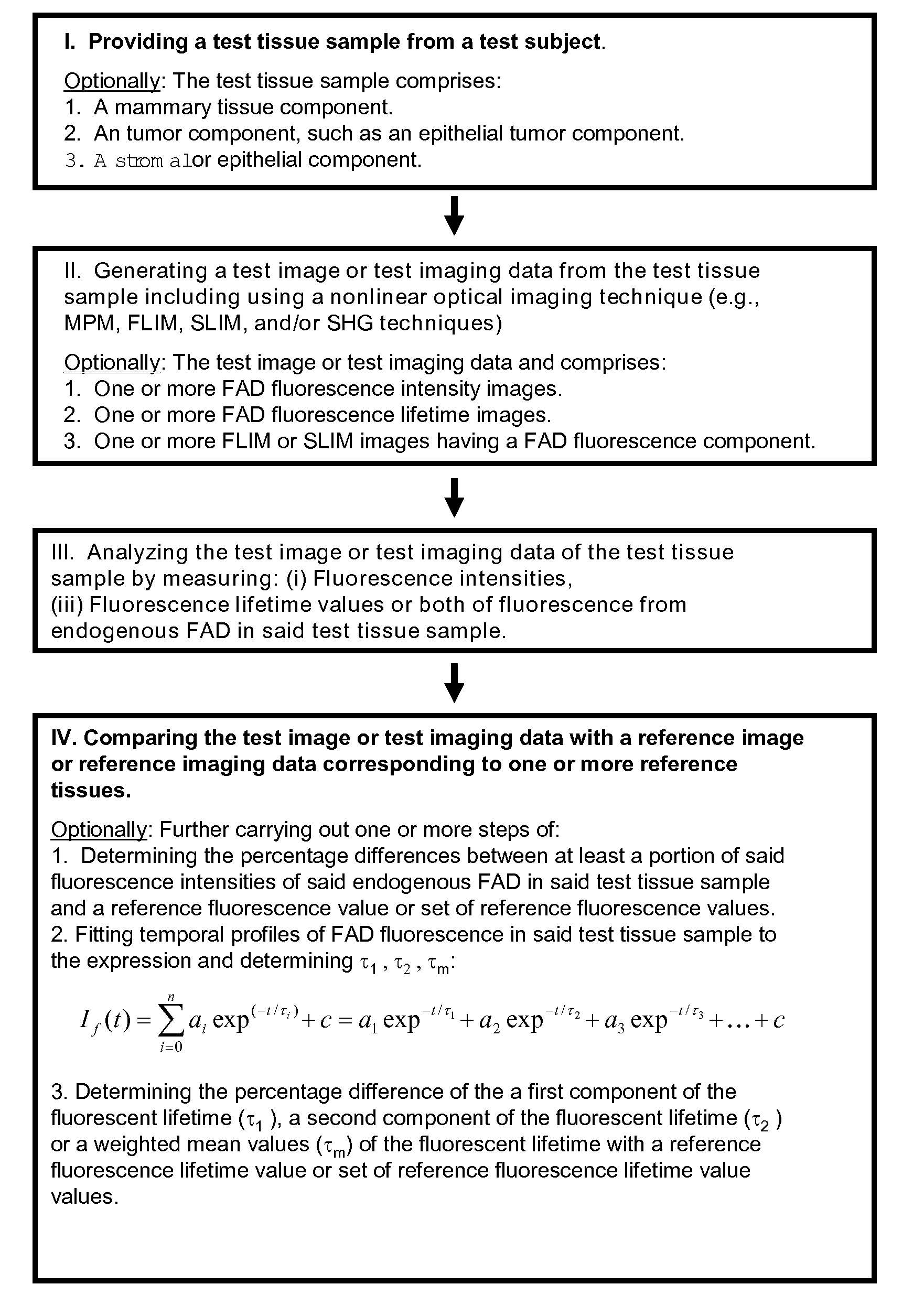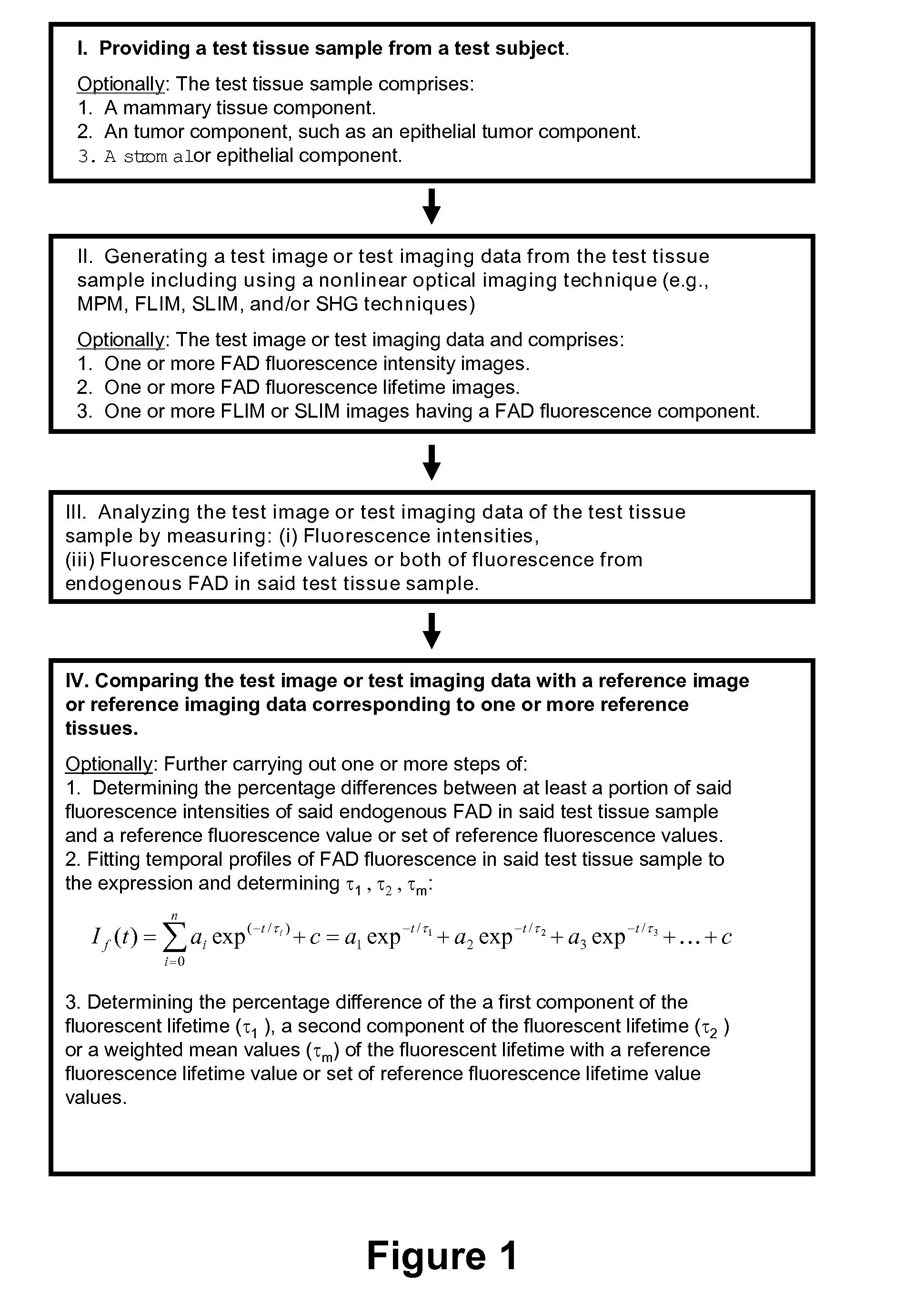Use of Endogenous Fluorescence to Identify Invading Metastatic Breast Tumor Cells
a metastatic breast tumor and endogenous fluorescence technology, applied in the field of endogenous fluorescence to identify invading metastatic breast tumor cells, can solve the problems of radioactive decay, low fluorescence emission, and relatively low two-photon absorption, and achieve the effect of accurate characterization
- Summary
- Abstract
- Description
- Claims
- Application Information
AI Technical Summary
Benefits of technology
Problems solved by technology
Method used
Image
Examples
example 1
Collagen Density Promotes Mammary Tumor Initiation and Progression
Abstract
[0054]Mammographically dense breast tissue is one of the greatest risk factors for developing breast carcinoma. Despite the strong clinical correlation, breast density has not been causally linked to tumorigenesis, largely because no animal system has existed for studying breast tissue density. Thus, the influence of the extracellular-matrix on breast carcinoma development and the underlying molecular mechanisms are not understood. Importantly, areas of high breast density are associated with increased stromal collagen. In this Example we demonstrate that increased stromal collagen in mouse mammary tissue increases tumor formation ˜3-fold and results in a more invasive phenotype. Using nonlinear optical imaging approaches we demonstrate that local invasion is facilitated by stromal collagen re-organization and that this behavior is increased in collagen dense tissues. Additionally, we identify a metabolic sign...
PUM
 Login to View More
Login to View More Abstract
Description
Claims
Application Information
 Login to View More
Login to View More - R&D
- Intellectual Property
- Life Sciences
- Materials
- Tech Scout
- Unparalleled Data Quality
- Higher Quality Content
- 60% Fewer Hallucinations
Browse by: Latest US Patents, China's latest patents, Technical Efficacy Thesaurus, Application Domain, Technology Topic, Popular Technical Reports.
© 2025 PatSnap. All rights reserved.Legal|Privacy policy|Modern Slavery Act Transparency Statement|Sitemap|About US| Contact US: help@patsnap.com



